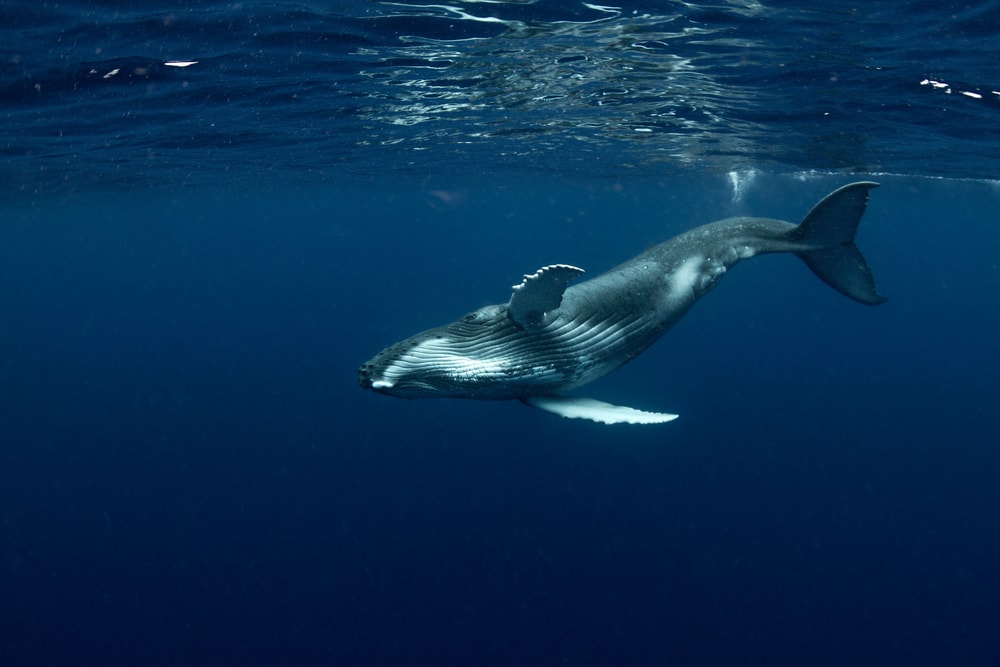
Most whales can hold their breath for several minutes, while others can dive for over an hour at a time. Their lungs aren’t solely responsible for this phenomenon though. Instead, whales store oxygen in their blood that they use when needed.
Whales are complex creatures; they live in the water full-time despite needing air. The largest whale in the world can grow up to 90 ft (27.4 m) and can weigh over 330,000 lbs (150,000 kg).
Not only are whales large, but they create reverberating, mesmerizing songs. You can hear these songs from miles away.
Most humans can only hold their breath for up to one minute, but whales can hold theirs for several minutes. Some whales can even hold their breath for over an hour.
It should come as no surprise that whales have enormous lungs. But, are the lungs responsible for whales holding their breath for a long time?
The answer is quite complex — a whale’s lungs are not like ours. Their lungs are smaller than ours in proportion to their body size. Yet, they can hold their breath so much longer than we can.
In short, the design of a whale’s body allows for deep dives and infrequent breaths. Their blowholes allow air to come in while keeping water out. Plus, their blood stores extra oxygen.
Simply stated, a whale’s body is incredibly elaborate and interesting. Keep reading to find out more.
Do Whales Need Air?
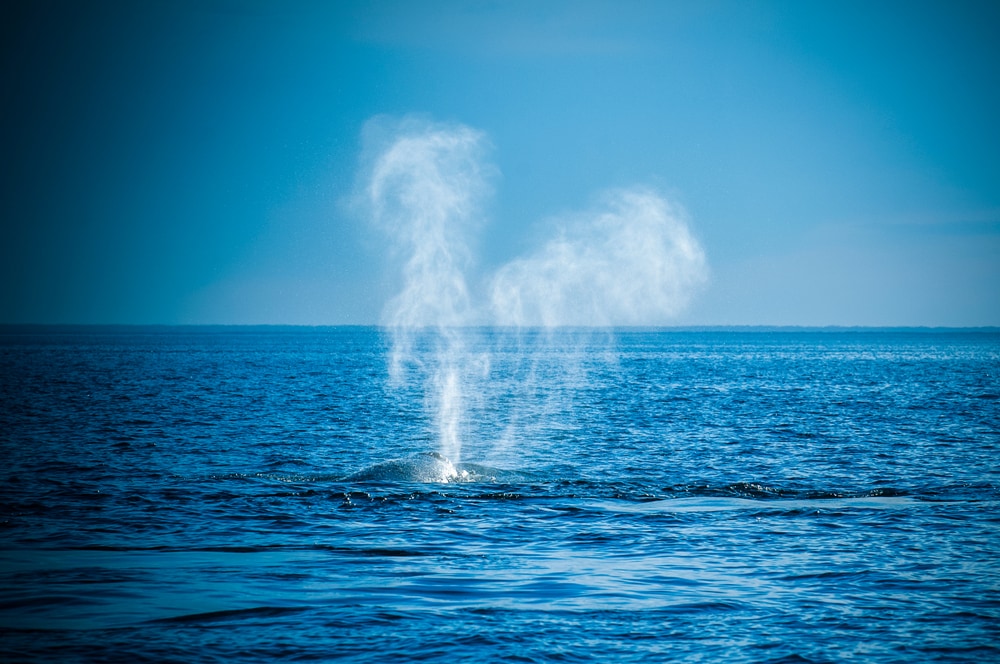
Although they live in the ocean, whales are mammals, so they need to come to the surface to breathe air. Without enough oxygen, they will suffocate and drown.
This means that whales must come to the surface of the water to breathe air every once in a while.
But, even if they use up all the oxygen in their body, they can breathe through anaerobic respiration. This is a process in which their body converts food molecules to energy without the use of oxygen.
As you can imagine, anaerobic respiration causes a rapid depletion of energy. It causes lactic acid to build up in the tissues which leads to muscle fatigue.
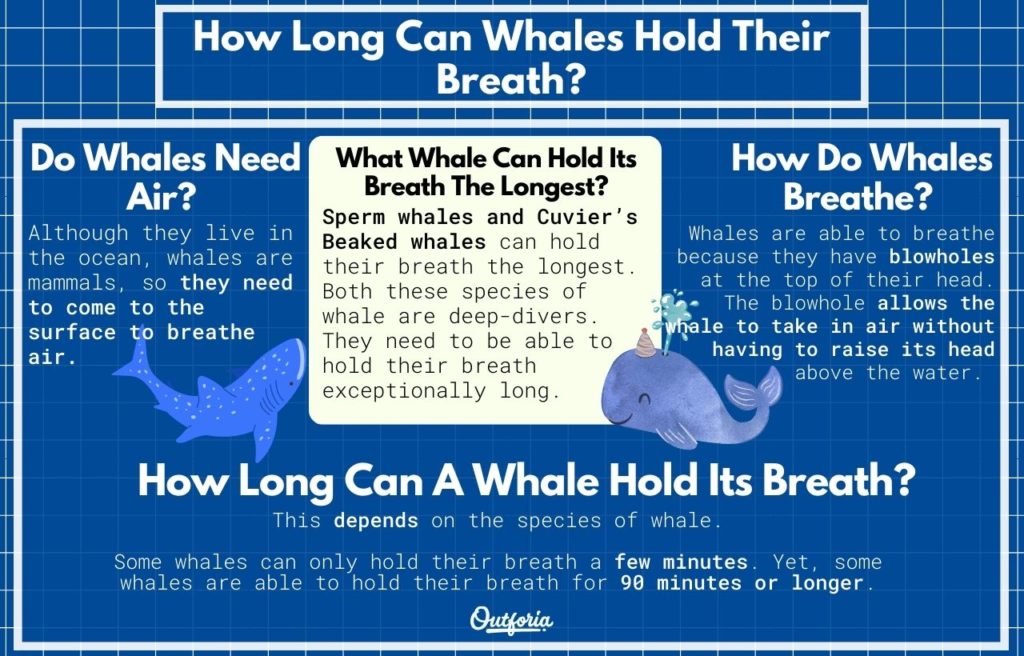
How Do Whales Breathe?
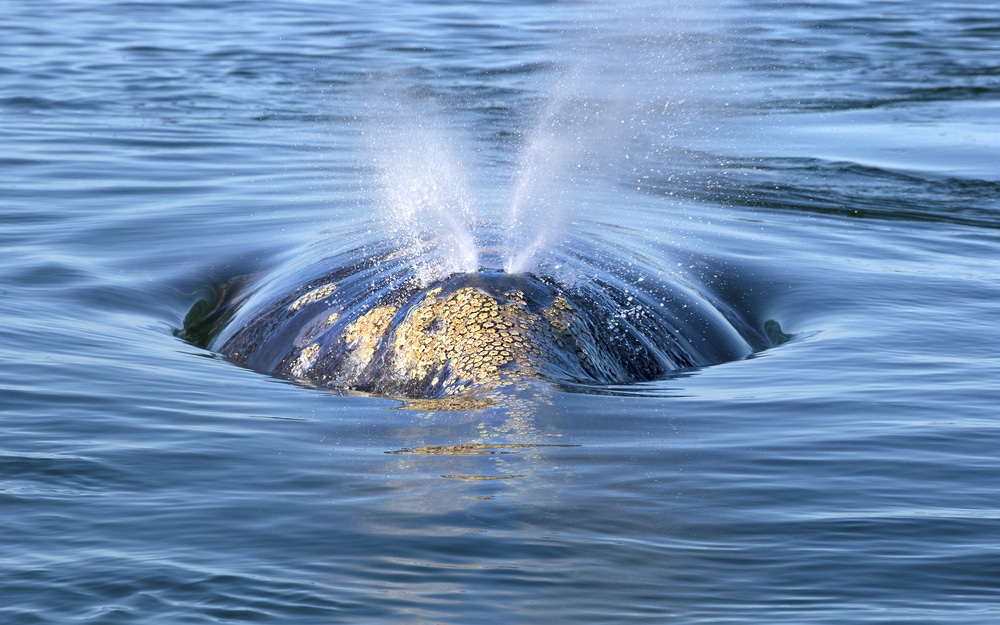
Whales are able to breathe because they have blowholes at the top of their head. The blowhole allows the whale to take in air without having to raise its head above the water.
Do Whales Have Lungs?
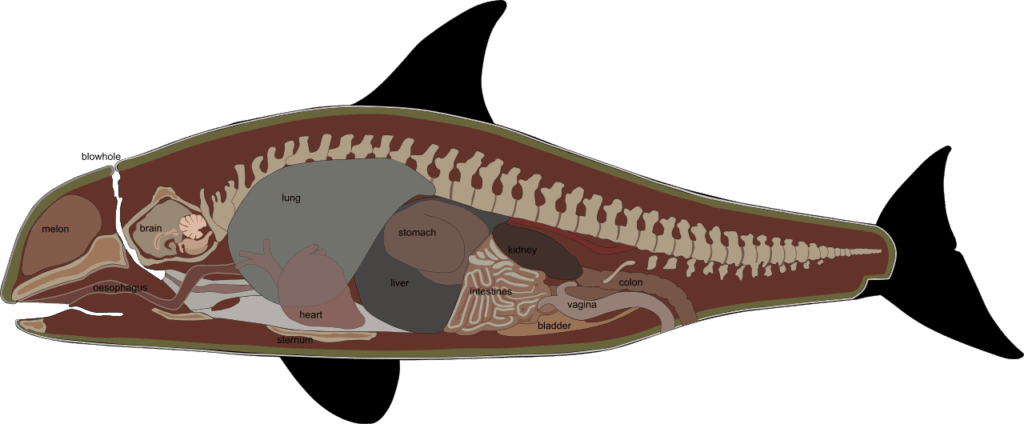
Whales are mammals and they have to breathe air. This means that they have a set of lungs. There are some fish who have evolved a labyrinth organ that allows them to breathe air as well as water. But, whales are not fish, so they must have lungs like the rest of us mammals.
A whale’s lungs are not the same as any other mammals, though. Whales must hold their breath for a much longer time than is necessary for most other mammals.
In fact, the human lungs take up about 7% of our internal cavity. A whale’s lungs only take up about 3% of its internal cavity. Despite this, whales can hold their breath much longer than a human can.
Because of this, their lungs have developed in a way that helps the whale’s entire body to get oxygen.
Their lungs can’t take in the amount of oxygen that is necessary for them. They also take in extra air to store in the rest of the body. This extra air stays in enlarged blood vessels where the body can use it as needed.
Whale Lungs Size
Whales are enormous, and some of the largest species have a lung capacity of up to 5,000 L.
You May Also Like: How Do Whales Sleep? All About Their Surprising Ways To Slumber
Why Do Whales Have Blowholes?
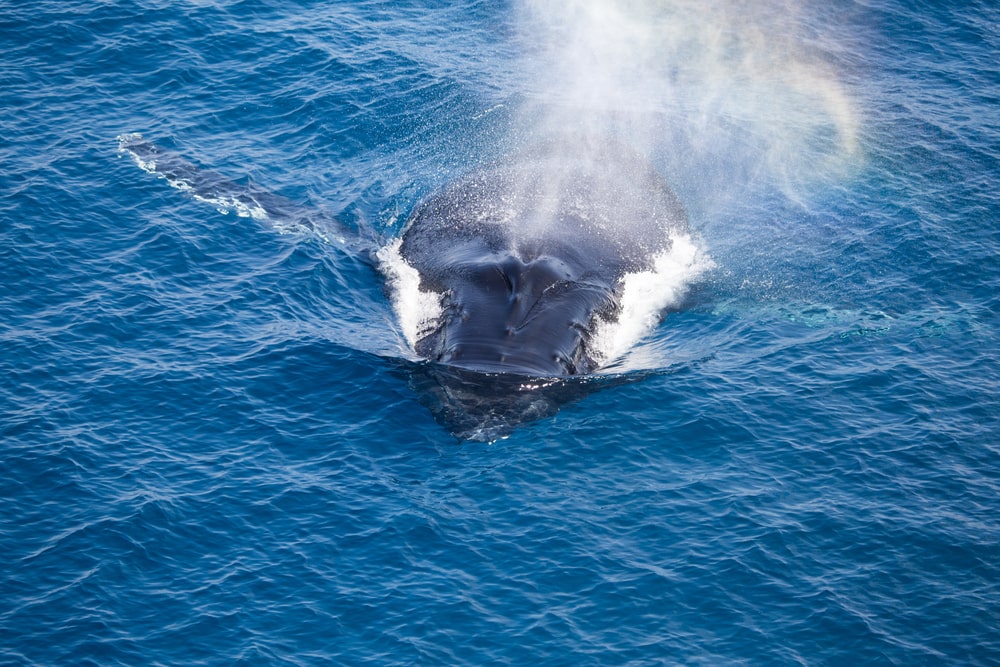
The reason that whales have blowholes is so that they’re able to breathe oxygen. You may be wondering if whales can also breathe through their mouths. After all, most mammals breathe through their mouths — but whales can’t!
Whales can’t breathe through their mouth because it’s not connected to their trachea. If it was, it could cause their lungs to fill with water, causing them to drown. It eliminates the possibility of food getting trapped in the whale’s throat. This could lead to suffocation.
How Does A BlowHole Work?
It would be quite difficult for a whale to breathe enough oxygen with its mouth alone. They would have to angle themselves so that their mouth is above the water. This would be difficult to do with their large body size.
Instead, whales have a blowhole. The blowhole sits at the top of the whale’s head. With their hole at the top of their body, only the top of the head needs to breach the surface of the water.
For example, it can be difficult for a whale to sleep because they still need to breathe. A blowhole makes it easier for the whale to rest while maintaining their breathing.
A blowhole connects to the trachea. It transfers air from the blowhole, down the trachea, and into the lungs.
Breaching
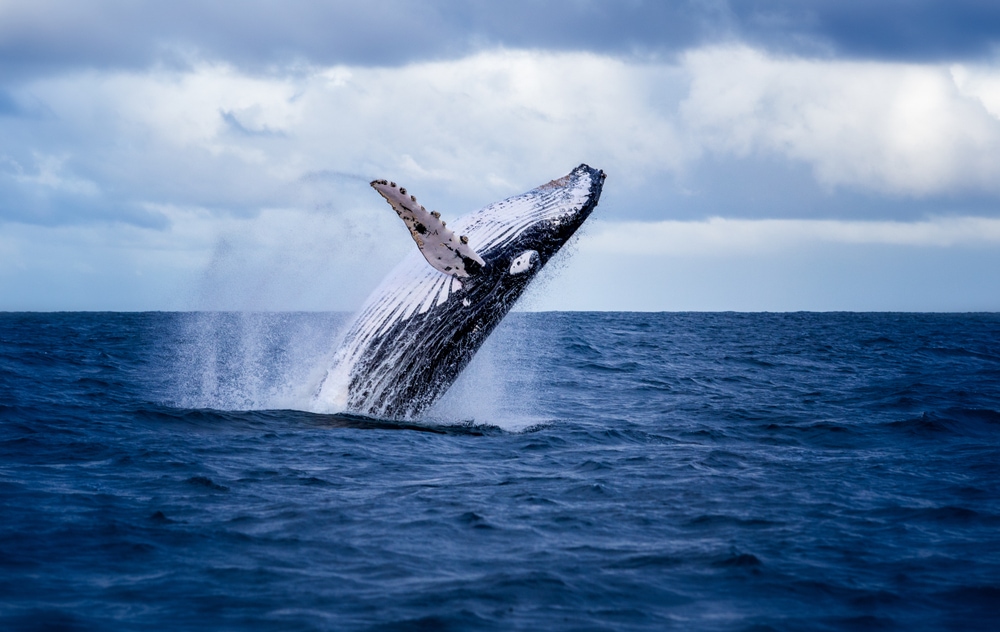
Most people who have seen a whale in in real life have also seen a whale using its blowhole.
After a long dive, the whale will come up for air, but it must get rid of any water around its blowhole. When a whale surfaces, we notice a large plume of water spouting from its blowhole. This is a sign that the whale is exhaling and expelling any excess water.
As I mentioned before, it’s not good for a whale to take water into its lungs — that’s why it can’t breathe through its mouth. So, it might seem dangerous that there is water entering their blowhole.
Not to fear — a whale doesn’t actually take water into its blowhole. The water that you see their blowhole expelling is water that has pooled around the rim.
No water ever enters the blowhole. A muscluar sphincter closes the hole when the whale needs to submerge.
Two Blowholes VS One
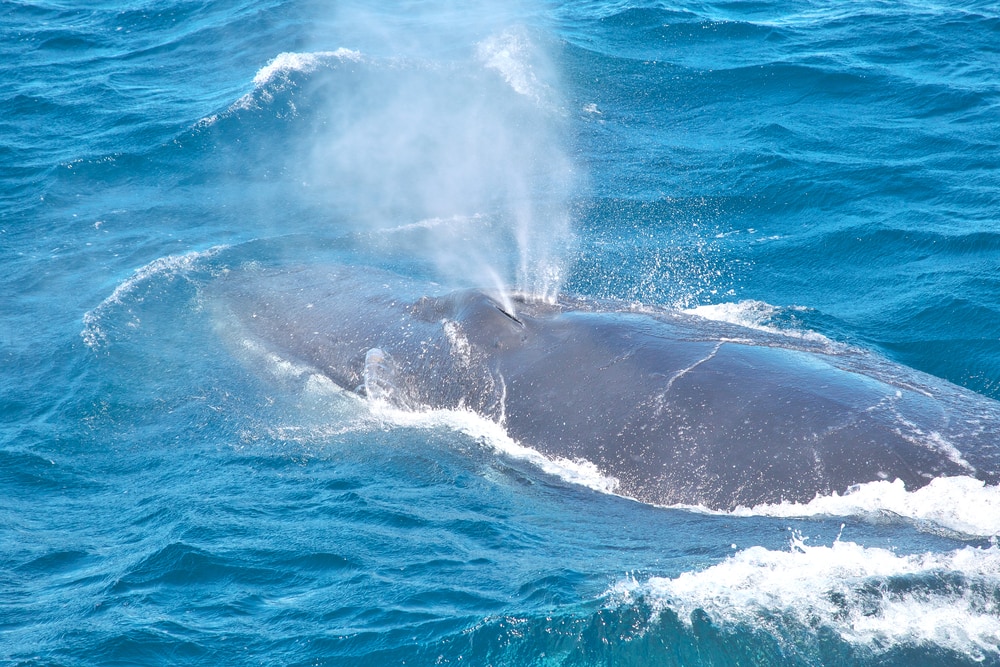
There are several different species of whales. We break the species into two suborders: baleen whales and toothed whales. We can classify a whale based on its mouth, teeth, and the way it breathes.
Baleen whales do not have teeth. They have baleen, a structure made out of keratin — the same stuff that makes up our fingernails and hair. Baleen can be feet long and helps the whale to filter out food. They will suck a large amount of water into their mouth. Then, the water filters through the baleen until only plankton remains.
Baleen whales have two blowholes and are usually larger than toothed whales. They need to bring more air into their body, and an extra blowhole allows them to do that.
Toothed whales have teeth to tear and shred their food. These whales also tend to be smaller than baleen whales, so they only have one blowhole.
Some scientists believe that toothed whales used to have two blowholes. One of their blowholes may have evolved into use for echolocation. Echolocatoin aids them in navigating their waters.
How Long Can A Whale Hold Its Breath?
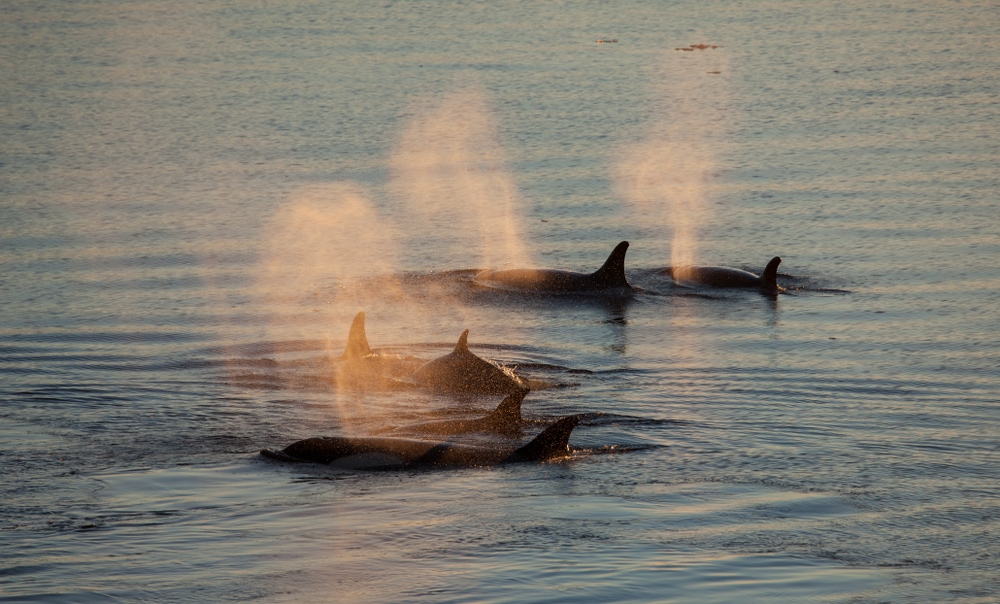
How long can whales hold their breath underwater? This depends on the species of whale.
Some whales can only hold their breath a few minutes. Yet, some whales are able to hold their breath for 90 minutes or longer.
Do Whales Breathe Underwater?
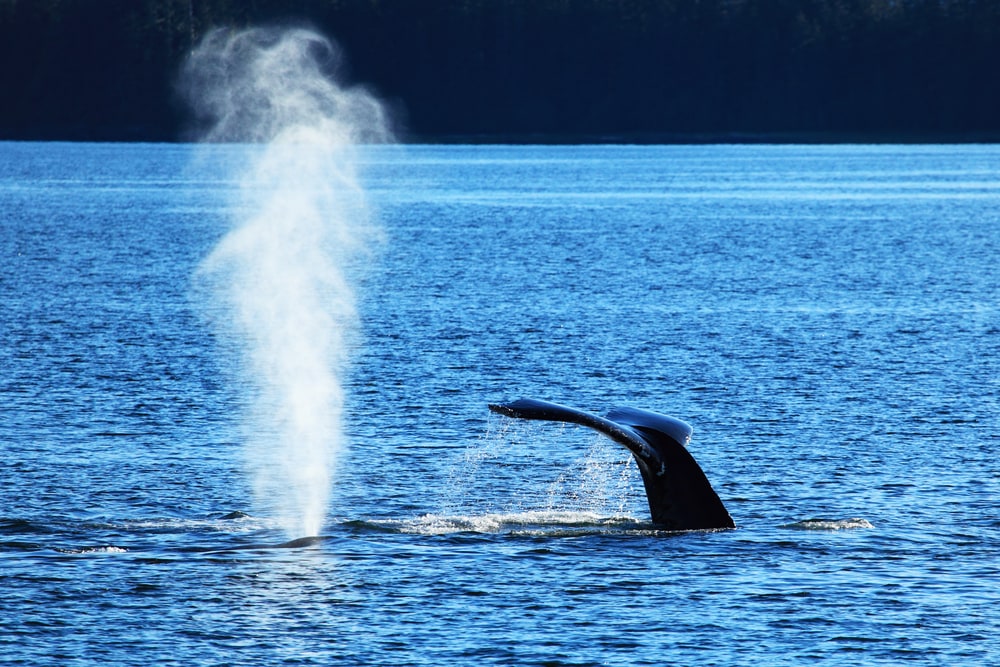
Whales are air breathers, so they cannot breathe underwater. Instead, they must surface for air every hour or so.
As you can imagine, this makes sleeping and resting quite difficult. If a whale were to fall asleep for too long, it could suffocate. But, whales have found a way around this.
Scientists call whales “conscious breathers” because they are never fully asleep. Only one-half of their brain will be asleep at a time. This allows the other half of the brain to remain aware. Whales need to know when they need to come up for air, and it can help them against predators.
You May Also Like: All 21 Different Types Of Whales: Guide, Pictures And Classification
Do Whales Have Gills?
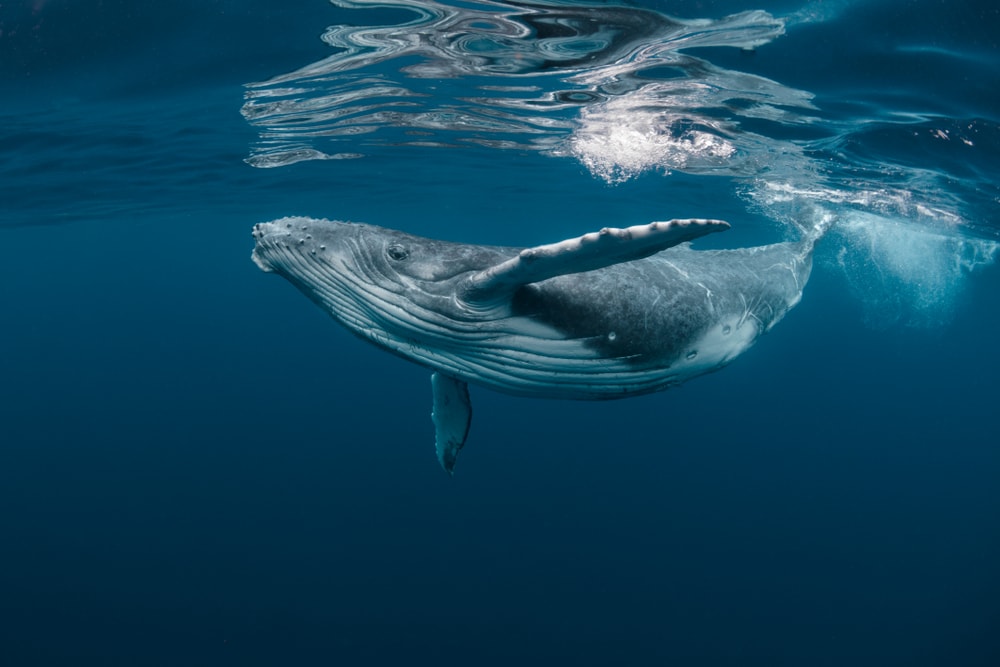
Many people have the wrong impression that whales have gills like fish do. It would make sense since whales live in the water. But, it isn’t true.
Their bodies have lungs, but no gills, so they cannot breathe water.
Instead, whales have blowholes.
How Can A Whale Hold Its Breath?
Whales have a more spectacular ability to hold their breath, but every mammal is able to hold its breath.
All mammals have a “diving reflex”. It is an involuntary reflex that allows the body to conserve oxygen. When a mammal dives, its heart rate slows down, and the capillaries in the limbs constrict. The body concentrates on pushing blood and oxygen to the vital internal organs.
All mammals have this diving reflex to hold their breath longer. This reflex is more advanced in mammals that spend a lot of time diving — like whales.
You may also like: How Do Dolphins Sleep? With One Eye Open
How Often Do Whales Come Up For Air?
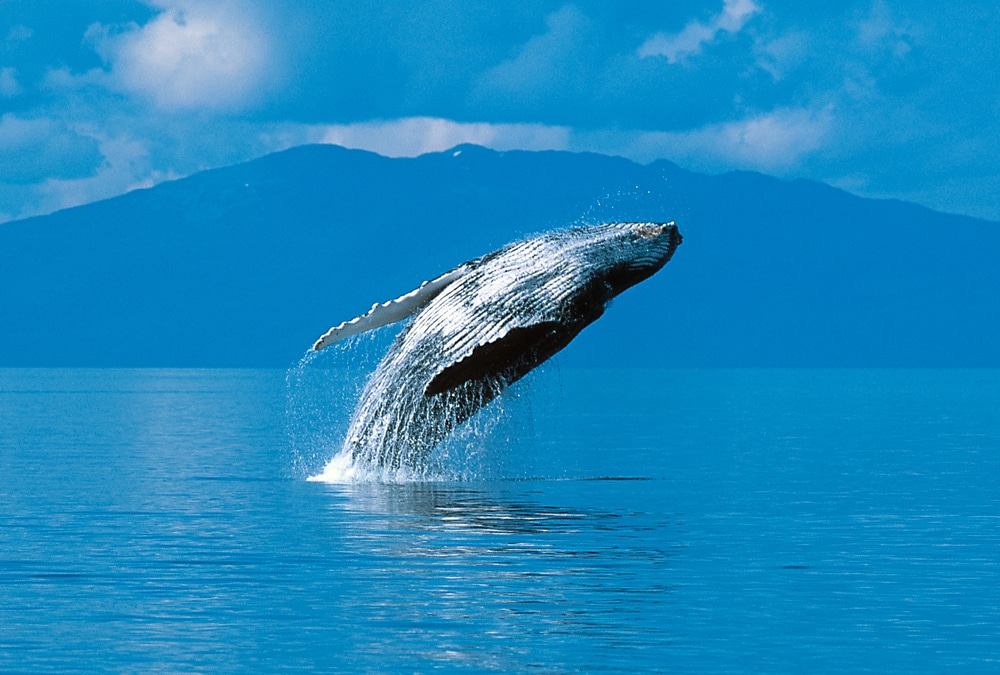
This depends on the type of whale and how long they can hold their breath. On average, larger whales will surface for air about every 10-15 minutes. Smaller whales usually won’t stay underwater for more than 5-minutes.
How Long Can A Blue Whale Hold Its Breath?
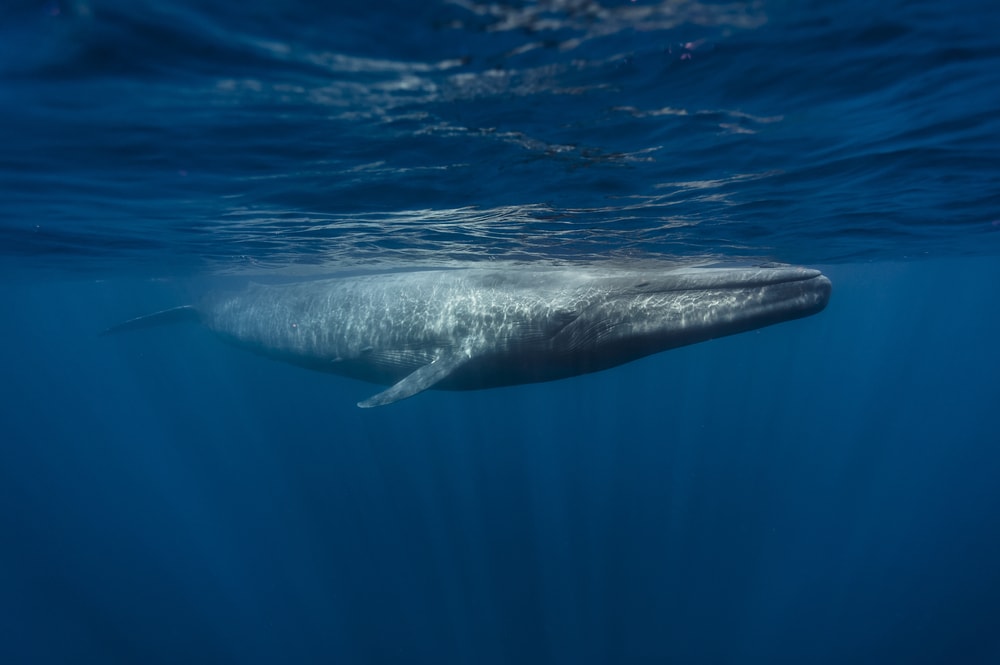
Blue whales are the largest mammals on the planet. As such, they need an extraordinary amount of oxygen. Usually, they only dive for about 30 minutes at one time, but some can dive for up to 90 minutes.
How Long Can A Sperm Whale Hold Its Breath?
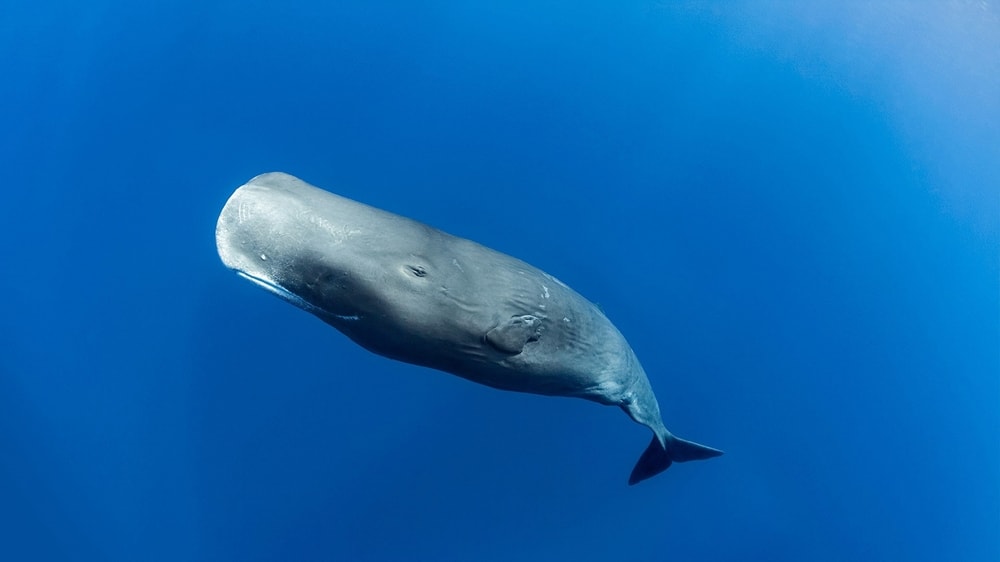
Unlike many other whales, sperm whales can hold their breath for a long time: up to 90 minutes. When staying underwater for this long, sperm whales can dive to depths of up to 1.8 miles (3 km).
How Long Do Humpback Whales Hold Their Breath?
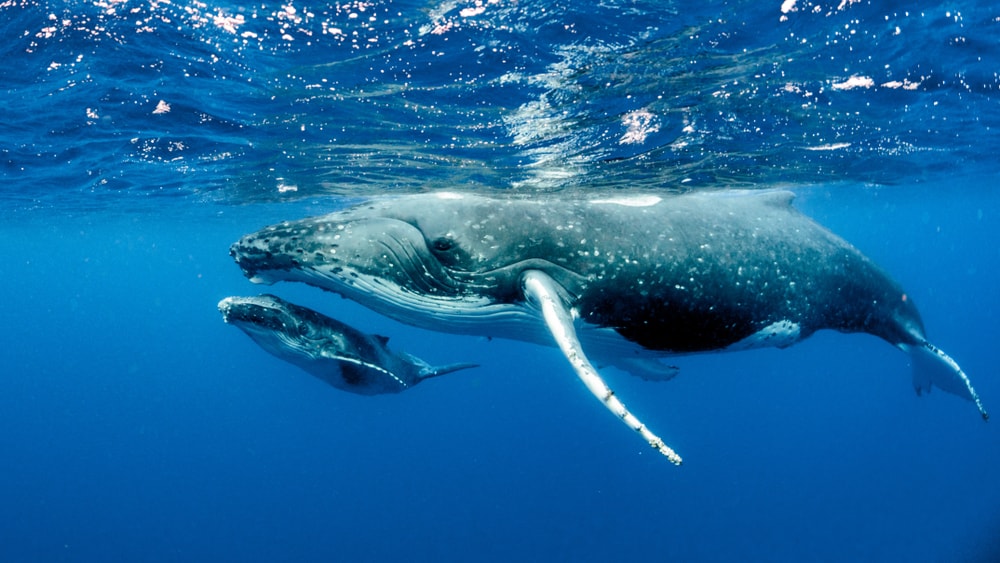
On average, it seems that a humpback whale will only dive for 4-7 minutes at a time. Still, they are capable of diving for up to an hour when needed.
When they come up for air, they will stay to take about 6-8 breaths. Then, they will dive back down for several more minutes.
How Long Can An Orca Hold Its Breath?
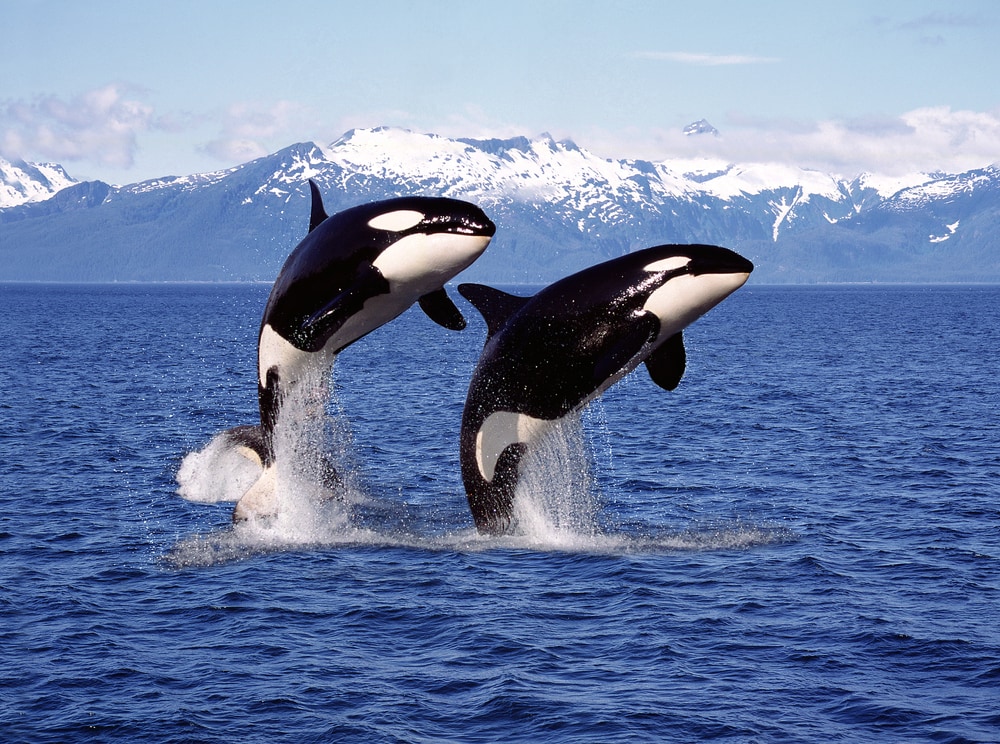
Orcas, or Killer Whales, can be a bit deceiving because of their name. Many people believe that orcas are whales. It’s in their name after all. But, orcas are not whales at all — they’re dolphins.
Although orcas are not whales, they still breathe the way that whales do. Both porpoises and dolphins breathe the same as whales — with lungs. They are all conscious breathers with blowholes that take in oxygen.
Orcas have an average dive time of just 2.3 minutes. They generally swim in a pattern of four 15-second consecutive dives. A longer dive that may last up to 3-4 minutes follows this.
Although it’s rare, transient orcas located in the North Pacific sometimes dive up to 11.2 minutes.
You May Also Like: How Do Sharks Mate? It Might Surprise You
What Whale Can Hold Its Breath The Longest?
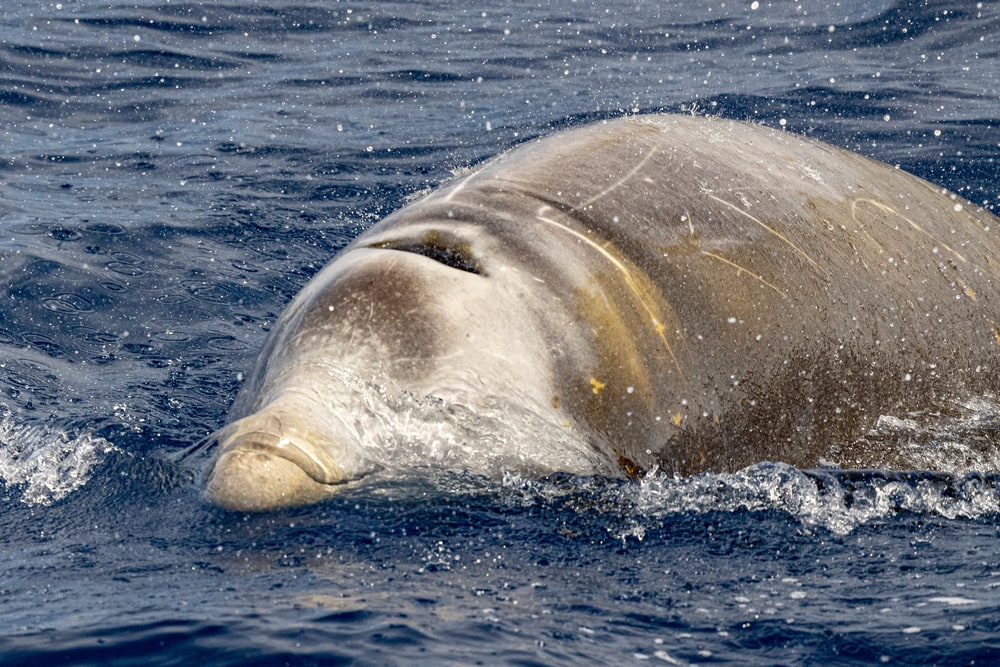
Sperm whales and Cuvier’s Beaked whales can hold their breath the longest. Both these species of whale are deep-divers. They need to be able to hold their breath exceptionally long.
Deep Divers
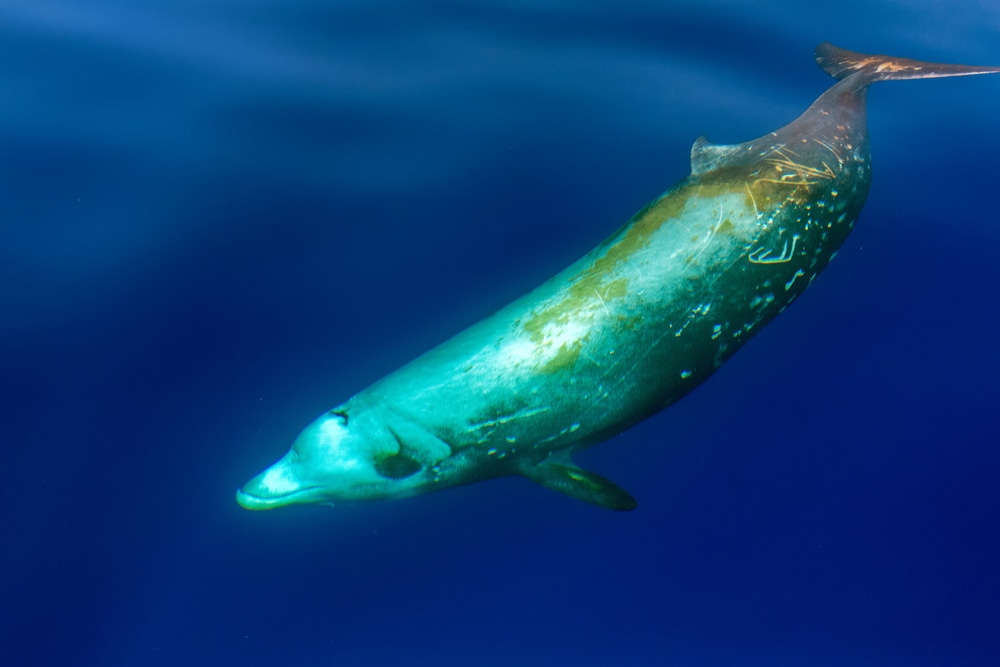
Cuvier’s Beaked whales are deep-diving mammals that travel to some of the deepest depths of the ocean. They can grow to be 23 ft (7 m) long and can weigh up to 6,800 lbs (3,080 kg).
These small whales spend very little time at the surface of the ocean, so it’s hard for researchers to observe them. Despite this, we’ve managed to discover their breath-holding abilities.
Researchers managed to tag 23 whales off of Cape Hatteras in North Carolina. Having tagged these whales, they observed 3,680 dives between 2014 and 2018.
The whales seemed to have two diving patterns: hunting for food, or not hunting for food.
When they’re searching for food, they tend to dive to deeper depths for longer periods of time. While hunting, they would dive to depths of 5,760 ft (1,450 m) and stay underwater for about an hour.
When they weren’t hunting, they usually only dived between depths of 980-1,600 ft (300-500 m). They only stayed underwater for about 30 minutes. Researchers hypothesize that these whales may dive to avoid predators when not hunting.
How Long Can They Hold Their Breath?
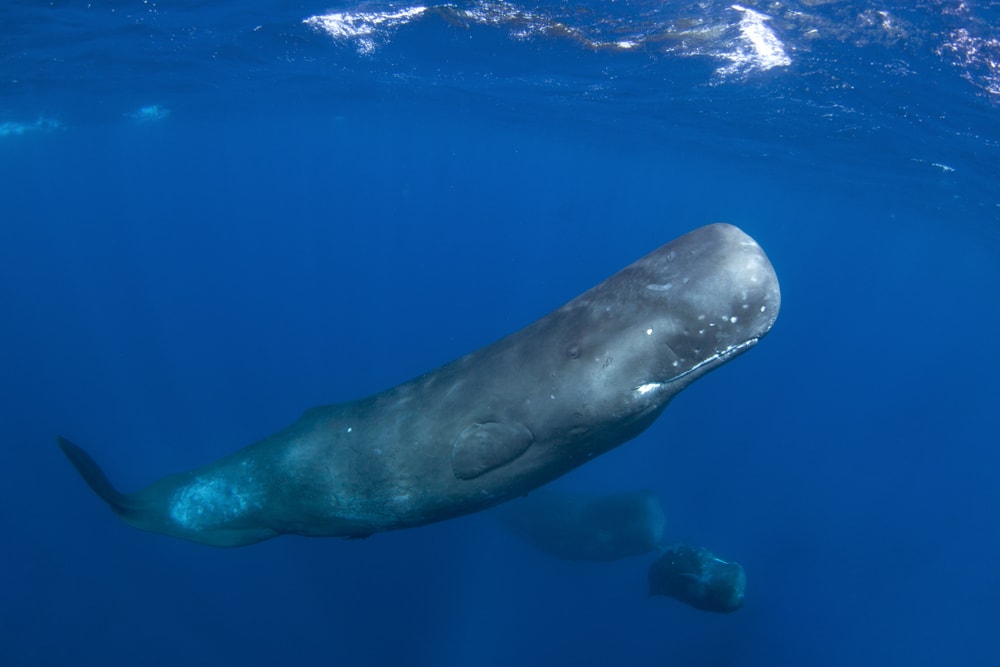
Both whale species can hold their breath for well over an hour. Still, the Cuvier’s Beaked whale has the Sperm whale beat. The Cuvier’s Beaked whale has the record for holding its breath for 137 minutes.
Researchers estimate that these whales spend about 90% of their lives underwater. This means it’s rare for them to come up for a breath. When they do come up for air, they only stay there for about two minutes before they dive again.
Remember that whales can switch to anaerobic respiration if they run out of oxygen. 95% of dives completed by deep-diving mammals occur before anaerobic respiration becomes necessary.
Cuvier’s Beaked whales can hold their breath for 78 minutes before anaerobic respiration takes over.
Special Blood
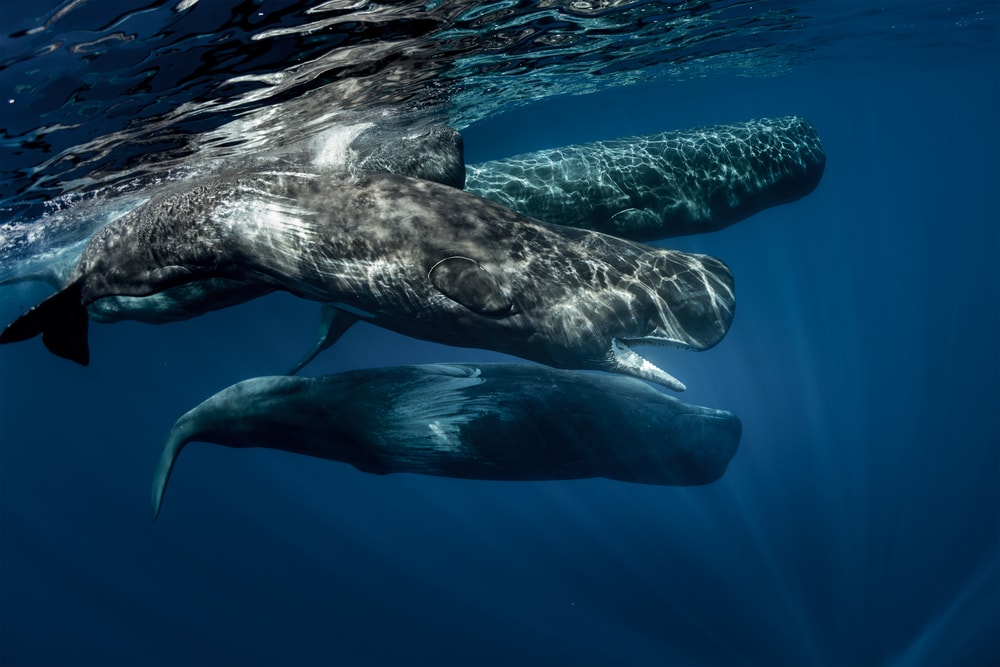
Whales can hold their breath for so long because they have hemoglobin and myoglobin. These proteins store large amounts of oxygen in their blood. Because of this, they use less energy.
Recovery
Cuvier’s Beaked whales can hold their breath for an exceptionally long time. This alone is impressive, but they do so without exerting much energy. Whales only need to rest for about half an hour after a two-hour-long dive.
This is extraordinary and goes against what researchers believed mammals were capable of. It would make sense that, the longer a whale holds its breath to dive, the longer it would need to recover. Yet, Cuvier’s Beaked whales appear to have a similar recovery time as whales who take much shorter dives.
How Long Can A Person Hold Their Breath?
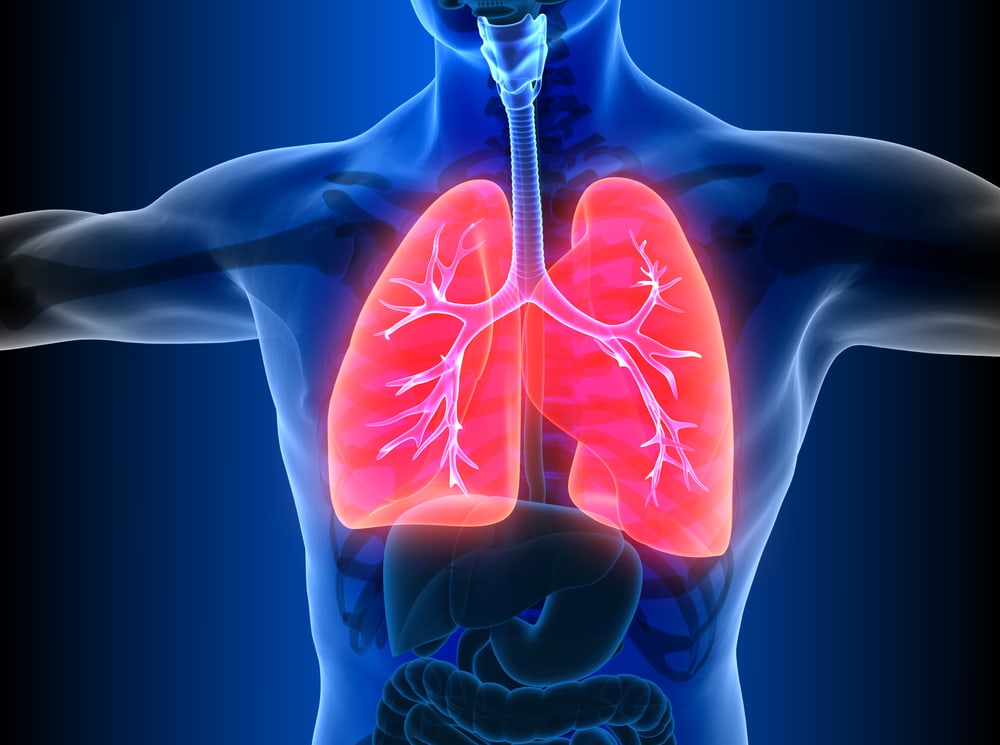
Now you know that whales can hold their breath for much longer than a human can. But, why is this?
Whale VS Human Lungs
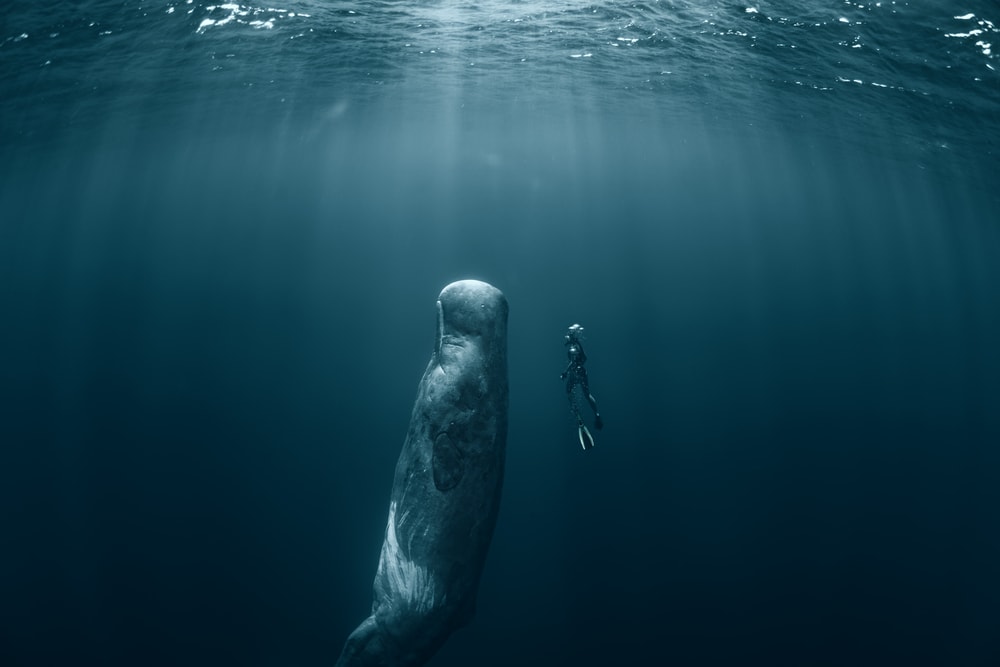
The most obvious reason may be that a whale’s lungs are so much larger. But, their lungs are actuallly smaller than ours in properotion to their body. They can hold their breath longer because of the design of their lungs, and the storage of oxygen in the blood.
As I mentioned before, a whale’s lungs can take in extra oxygen so that the body can use it as needed. Storage of this extra oxygen occurs in the blood. Humans can’t do this.
In fact, researchers believe that whales can use up to 90% of the total oxygen they take into their bodies. In comparison, humans can only use about 15% of the total oxygen they breathe in.
A Whale Needs To Hold Its Breath
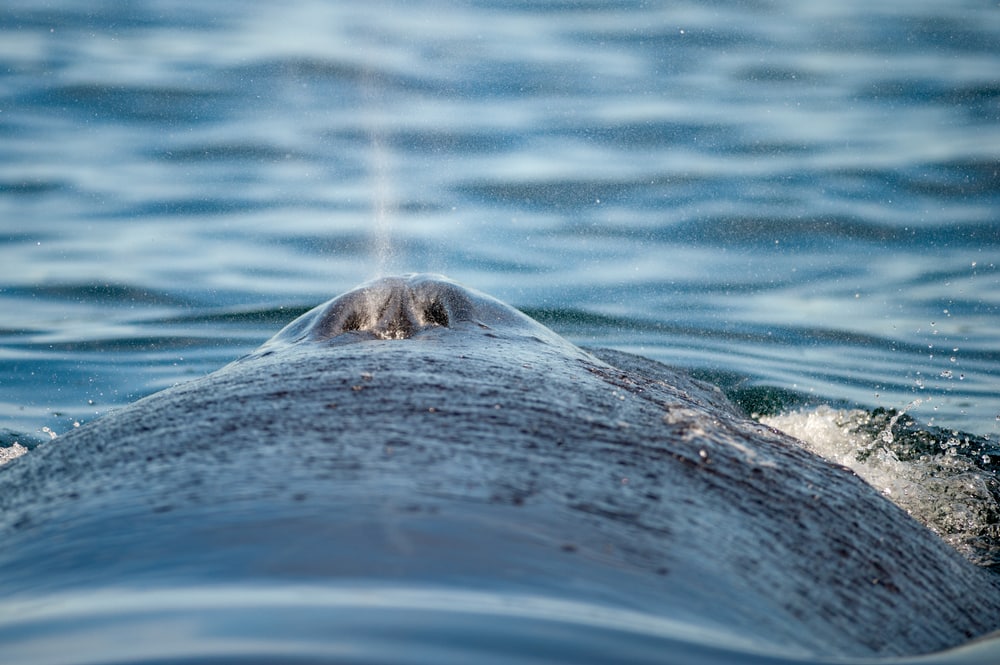
The reason for this is simple: we don’t spend large amounts of time underwater as whales do. We have no need to store extra oxygen in our bodies because the air around us is usually good enough.
Whales can hold their breath between 30 minutes and 2 hours. Humans can hold their breath between 30 seconds to 2 minutes, on average. There are some exceptions where humans can hold their breath for longer. But, this usually requires training.
Human Lungs: The Weaker Organs

Humans really aren’t meant to hold their breath. Your lungs are going to start to feel uncomfortable after only 30 seconds. If you manage to make it past two minutes, your diaphragm will begin to convulse, trying to force you to take a breath.
After three minutes, you’re going to feel lightheaded. This is because there is a reduced amount of oxygen-rich blood traveling to your brain. After five minutes, your muscles will contract and cause your body to shake.
After six minutes, you will pass out. If you’re on land, this is actually a good thing. Your unconscious body will automatically resume breathing. If you’re underwater, you’re going to drown.
Clearly, we weren’t meant to be deep divers like whales. Imagine how your body feels after holding your breath for just one minute. Now imagine holding your breath for two hours like the Cuvier’s Beaked whale. It’s bound to give you a new appreciation of these amazing creatures.








